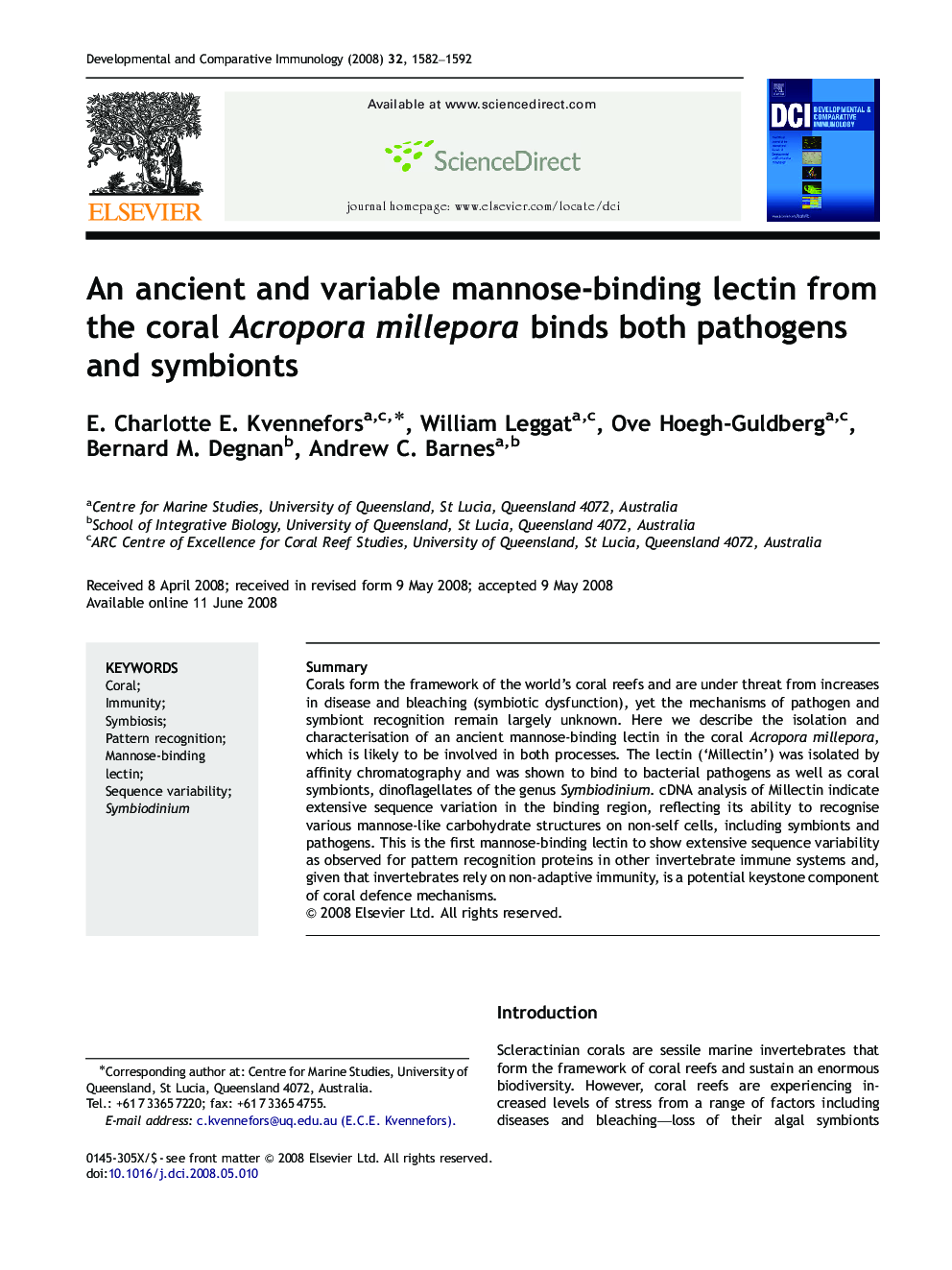| Article ID | Journal | Published Year | Pages | File Type |
|---|---|---|---|---|
| 2430079 | Developmental & Comparative Immunology | 2008 | 11 Pages |
SummaryCorals form the framework of the world's coral reefs and are under threat from increases in disease and bleaching (symbiotic dysfunction), yet the mechanisms of pathogen and symbiont recognition remain largely unknown. Here we describe the isolation and characterisation of an ancient mannose-binding lectin in the coral Acropora millepora, which is likely to be involved in both processes. The lectin (‘Millectin’) was isolated by affinity chromatography and was shown to bind to bacterial pathogens as well as coral symbionts, dinoflagellates of the genus Symbiodinium. cDNA analysis of Millectin indicate extensive sequence variation in the binding region, reflecting its ability to recognise various mannose-like carbohydrate structures on non-self cells, including symbionts and pathogens. This is the first mannose-binding lectin to show extensive sequence variability as observed for pattern recognition proteins in other invertebrate immune systems and, given that invertebrates rely on non-adaptive immunity, is a potential keystone component of coral defence mechanisms.
